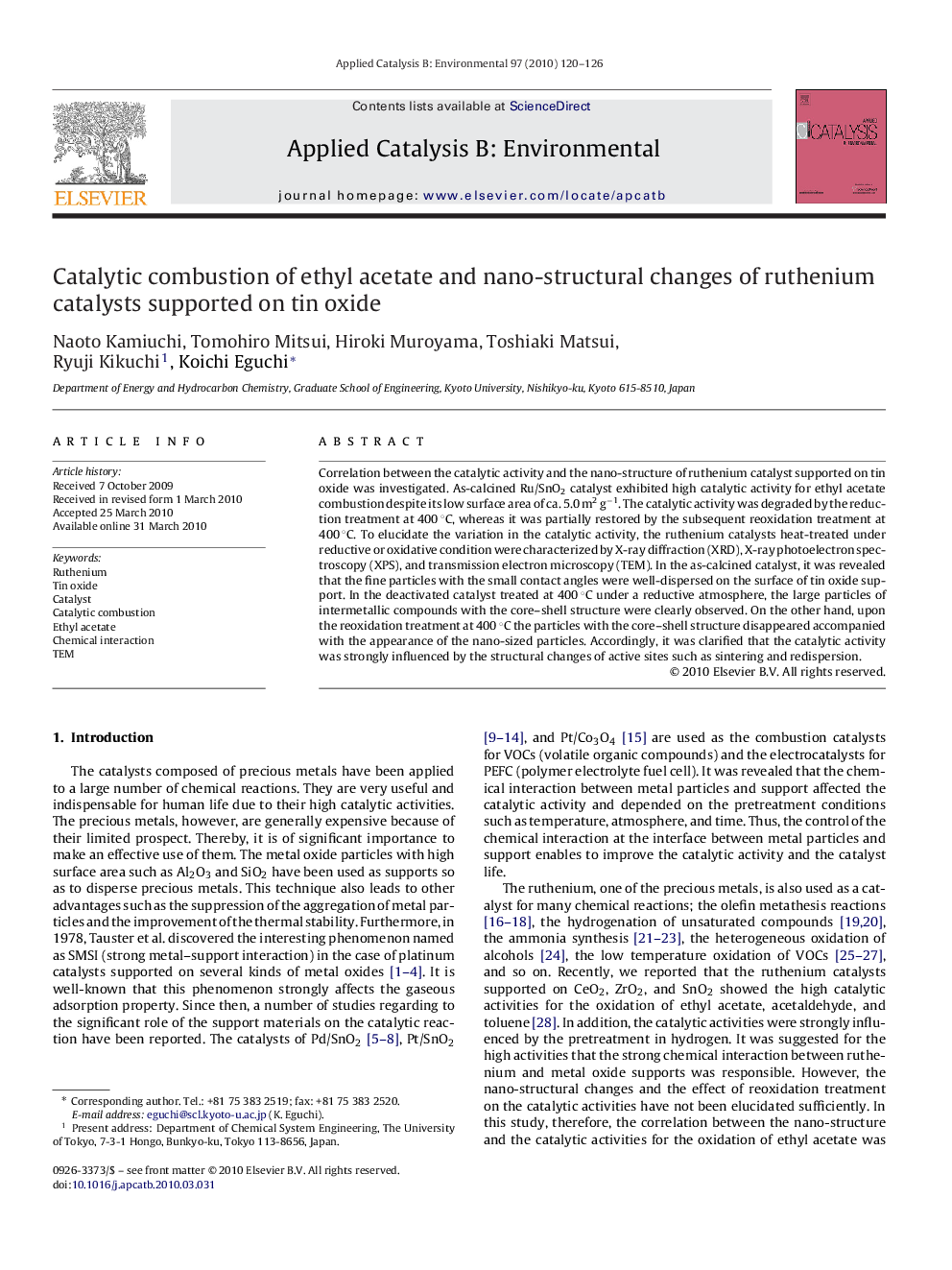| Article ID | Journal | Published Year | Pages | File Type |
|---|---|---|---|---|
| 47286 | Applied Catalysis B: Environmental | 2010 | 7 Pages |
Correlation between the catalytic activity and the nano-structure of ruthenium catalyst supported on tin oxide was investigated. As-calcined Ru/SnO2 catalyst exhibited high catalytic activity for ethyl acetate combustion despite its low surface area of ca. 5.0 m2 g−1. The catalytic activity was degraded by the reduction treatment at 400 °C, whereas it was partially restored by the subsequent reoxidation treatment at 400 °C. To elucidate the variation in the catalytic activity, the ruthenium catalysts heat-treated under reductive or oxidative condition were characterized by X-ray diffraction (XRD), X-ray photoelectron spectroscopy (XPS), and transmission electron microscopy (TEM). In the as-calcined catalyst, it was revealed that the fine particles with the small contact angles were well-dispersed on the surface of tin oxide support. In the deactivated catalyst treated at 400 °C under a reductive atmosphere, the large particles of intermetallic compounds with the core–shell structure were clearly observed. On the other hand, upon the reoxidation treatment at 400 °C the particles with the core–shell structure disappeared accompanied with the appearance of the nano-sized particles. Accordingly, it was clarified that the catalytic activity was strongly influenced by the structural changes of active sites such as sintering and redispersion.
